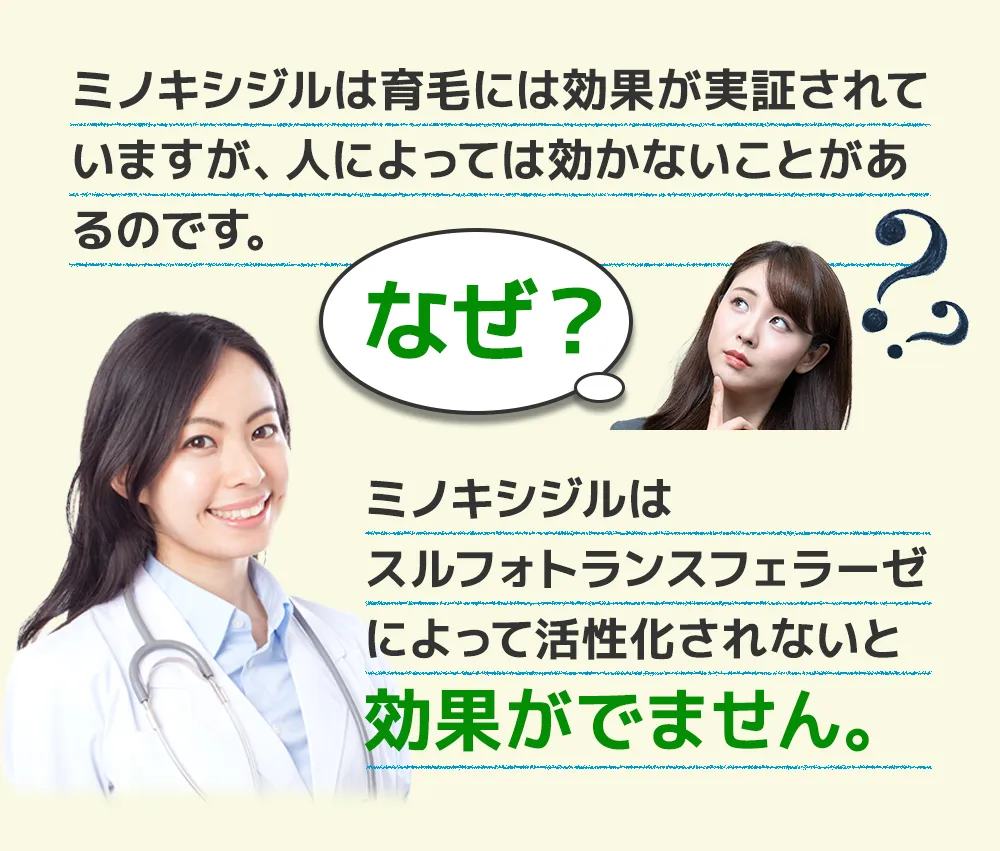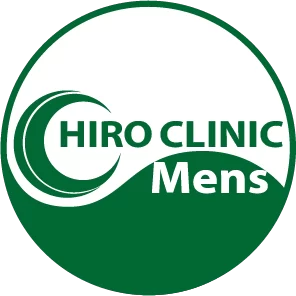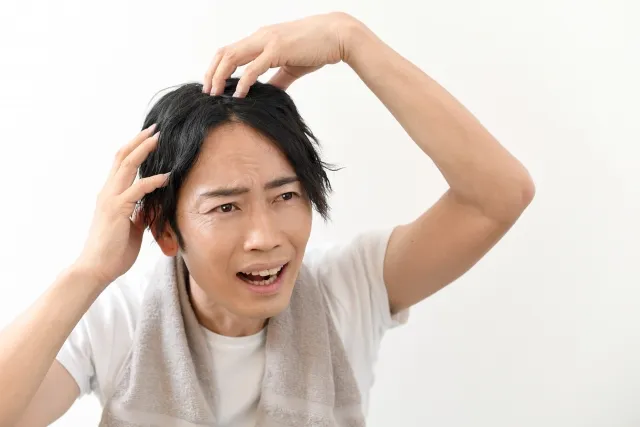この記事の概要
生え際や頭頂部は薄毛になりやすいといわれていますが、原因が何か分からない人も多いでしょう。本記事では、生え際や頭頂部が薄毛になりやすい原因や薄毛のチェック方法を紹介します。
The hairline and the top of the head are said to be prone to thinning hair, but many people may not know what causes it.This article introduces the causes of thinning hair at the hairline and top of the head and how to check for thinning hair. If you suspect thinning hair, it is important to see a doctor as soon as possible.
Causes of thinning hair at the hairline and top of the head
There are many reasons why the hairline and top of the head are prone to thinning.Here are six of the main reasons for thinning hair.
AGA (male alopecia)
AGA ( alopecia areata) is a progressive alopecia that affects one in three Japanese men.Although there is no single cause of thinning hair, it is said that more than 90% of Japanese men have thinning hair due to AGA. AGA (male alopecia ) is a hair loss disorder caused by genetics and hormones, and can occur not only in men but also in women.
This is how testosterone, one of the male hormones, is transformed into DHT under the influence of the enzyme 5α-reductase in the scalp, which binds to hormone receptors and produces hair loss factors, making hair loss more likely to occur.Androgen receptors (male hormone receptors) are particularly abundant in hair follicles on the top of the head and at the hairline, and the activity of the enzyme 5α-reductase tends to be high. Therefore, hair thinning is more likely to occur on the top of the head and at the hairline.
Once AGA (male alopecia ) develops, it does not naturally heal or stop thinning hair in the process.Early countermeasures are necessary.

Poor scalp environment
A number of factors contribute to an unfavorable scalp environment.When scalp health is compromised, hair growth can be negatively affected, contributing to the progression of hair loss and thinning. Below are some specific conditions that are considered poor scalp conditions.
Condition of poor scalp environment
- Dry scalp
- A dry scalp can cause itching and dandruff. This can damage hair follicles and prevent hair growth.Dryness also reduces the barrier function and weakens the defense against external stimuli.
- Oily scalp (seborrheic dermatitis)
- Excessive sebum production causes the scalp to become sticky and the pores to become clogged.Clogged pores inhibit hair growth and cause thin, weak hair to grow. In addition, excessive sebum production can encourage the growth of bacteria and cause inflammation.
- Dandruff or itchy scalp
- Dandruff and itching are caused by dryness and seborrhea of the scalp.These are signs of scalp inflammation, a chronic condition that can lead to increasingly worse scalp conditions. Heavy dandruff may also indicate that the turnover of the scalp is disturbed.
- Blood circulation failure
- When blood circulation to the scalp is poor, nutrients and oxygen necessary for hair do not reach the hair follicles sufficiently, resulting in slow hair growth and hair loss. Poor circulation can be caused by cold, stress, and inappropriate lifestyle habits.
- Inflammation and redness of the scalp
- If there is inflammation or redness on the scalp, this may indicate an ongoing skin problem such as an allergic reaction or dermatitis. Inflammation may weaken hair follicles and inhibit hair growth.
- Clogged Pores
- When sebum, styling products, and dirt clog the pores, hair growth is impeded. Clogged pores make it difficult for new hair to grow, resulting in thinning hair.
- Hardening of the Scalp
- A hardened scalp reduces blood circulation, making it difficult for the hair to receive the nutrients it needs for growth. Hardening of the scalp may be remedied by scalp massage and the use of appropriate shampoos.
Points to improve scalp environment
- Proper cleansing: Select a shampoo that is appropriate for the condition of the scalp and avoid products that are too strong than necessary.
- Moisturizing: Shampoos and treatments with moisturizing ingredients are effective for dry scalp.
- Promoting blood circulation: scalp massage is performed to improve blood circulation and supply nutrients to hair follicles.
- Improve lifestyle: Eat a well-balanced diet, get enough sleep, and manage stress.
Proper care is necessary because a poor scalp environment can easily lead to AGA and hair loss.
Lack of sleep, stress, lack of exercise, unbalanced diet, alcohol consumption, smoking, and other lifestyle disturbances can also cause thinning of hair at the hairline and crown of the head.Lack of sleep and stress can hinder hair growth, while an unbalanced diet can lead to a lack of nutrients necessary for hair growth, resulting in thinning and hair loss.
Lack of exercise, smoking, and alcohol consumption can constrict blood vessels and worsen blood circulation, which may disrupt the hair cycle and cause hair thinning.Hair health depends on blood flow and nutrient supply. The top of the head and hairline have thinner blood vessels and less blood flow than other scalp areas, making it difficult for nutrients to reach them adequately. With inadequate blood flow, hair follicles will not receive the oxygen and nutrients they need, and hair growth will be inhibited.
Age-related changes in male hormones
As we age, changes occur in the secretion of male hormones, and DHT, which promotes hair loss, is more likely to be secreted.Aging also shortens the hair growth cycle and increases the number of hairs in the resting phase, which slows the growth of new hairs and is thought to reduce overall hair volume.
Hair repeats three cycles: growth phase, regression phase, and resting phase. The growth phase lasts 2 to 7 years and is the time when hair grows.The regression phase lasts two to three weeks, during which the hair follicles contract and stop growing. The resting phase lasts 3-4 months, during which time the hair is shed and the next growth phase begins. The hair follicle (the tissue surrounding the hair root) on the top of the head and at the hairline tends to have a shorter cycle and a shorter growth phase than other areas.
Aging will also lead to deterioration of blood flow to the scalp, which will prevent sufficient nutrients from reaching the hair follicles and inhibit hair growth.
Genetic Factor
Thinning hair on the top of the head and at the hairline is also related to genetic factors.With certain genetic mutations and family history, hair follicles on the top of the head and at the hairline tend to be more susceptible to hormonal effects. As a result, thinning hair may be common within families with the same genes.
External Cause
In daily life, the top of the head and hairline are more prone to physical stress and thinning hair.For example, the use of hats and excessive irritation to the scalp can put stress on hair follicles. Environmental factors such as ultraviolet radiation are also factors that can easily damage hair on the top of the head and at the hairline.
Key to identifying thinning hair on the top of the head
Here are three key points to recognize thinning hair on the top of the head.Some people may not notice whirlpool baldness on their own and may only notice it when someone points it out to them. However, it is important to be able to notice it through self-checking so that measures can be taken before the thinning hair progresses.
Can you see through the scalp?
The center of the whirlpool is basically visible, but as whirlpool baldness progresses, the center of the whirlpool becomes blurred and the whirlpool flow becomes indistinct.In addition, when the scalp becomes more visible through the whirlpool, thinning of the hair is considered to be the cause of the baldness.
Reduced volume on the top of the head
If you have noticed a decrease in volume on the top of your head, there is a good chance that you have thinning hair.If you notice that the hair around the whirlpool area is becoming softer and less voluminous, one option is to consult a hospital or specialized clinic. When the hair cycle is disrupted, softening of the hair is likely to occur, in which the hair falls out before it has fully grown.
No Rounding of Hair Follicles
Healthy hair follicles that are not thinning are rounded, whereas follicles with stunted hair growth are elongated.If you check the hair follicles of a hair that is falling out and they are elongated in shape, consider the possibility that the hair has fallen out before it has fully grown for some reason. If the follicles are black, it also means that the hair has fallen out while it was still growing.
How to recognize thinning hair at the hairline
Here are three points to recognize thinning hair at the hairline.It is difficult to notice when the hairline is slowly receding. Know the checkpoints and check regularly so that you can tell if thinning hair is occurring.
It’s Receding by Two Fingers.
If the hairline has receded by two fingers, there is a possibility that the hair is thinning.Thinning hair at the hairline is also known as “M-shaped baldness,” and since it can progress without notice, it is important to keep the criteria for receding hairline in mind.
Even with bangs down, the skin shows through.
When the hairline thins, the skin will show through even when the hair is down in the front.When the skin becomes transparent not only at the hairline but also on the entire top of the head, thinning hair should be suspected. Even if you try to cover the thinning hairline with bangs, it is difficult to style them because the hair volume is reduced.
Suddenly my hair is thinning.
If you suddenly notice a decrease in hair volume or an increase in hair loss, suspect thinning hair.If you think it is just your imagination and leave it alone, thinning hair may progress rapidly. If you notice an increase in hair loss when washing and showering your hair or an increase in the number of hairs falling out on your pillow, you may be suffering from thinning hair.
Summary
The hairline and the top of the head are said to be susceptible to thinning hair due to the effects of hormonal balance and lifestyle disorders.If you feel that the surface of your hair is becoming visible or that hair loss is increasing, you should suspect thinning hair. In addition, early treatment is important to improve thinning hair, so if you feel that your hair is thinning, it is important to visit a hospital or specialized clinic as soon as possible.
There is no single treatment method for thinning hair; there are a variety of methods, including oral and topical medications and hair transplants.The causes of thinning hair are different for each individual, and the appropriate treatment method varies from person to person.Therefore, if you feel that your hair is thinning, please visit a clinic or hospital as soon as possible and ask them to suggest a treatment method that suits you best.
【参考文献】
- 【頭頂部はげ】見分け方や原因、薄毛を改善する画期的な治療法とは?
- 自分の頭頂部(つむじ)はハゲている?頭頂部の薄毛の基準や原因、対策を解説 | 親和クリニック®︎新宿院公式サイト
- 頭頂部の薄毛(つむじはげ)は治せる? 【医師が原因と対策を解説】
- 生え際がスカスカになるのはなぜ?原因と回復させる方法 | AGA・抜け毛・薄毛治療のAGAメディカルケアクリニック【公式】
- つむじはげの基準はどこから?セルフチェック方法・治し方・原因を専門医が解説!-大阪AGA加藤クリニック
- M字ハゲの基準や対策とは?生え際が後退する原因と治療方法について|湘南AGAクリニック-AGA治療・薄毛治療・自毛植毛
- 禿げやすい人の5つの特徴は?薄毛対策・予防から治療まで徹底解説-大阪AGA加藤クリニック









